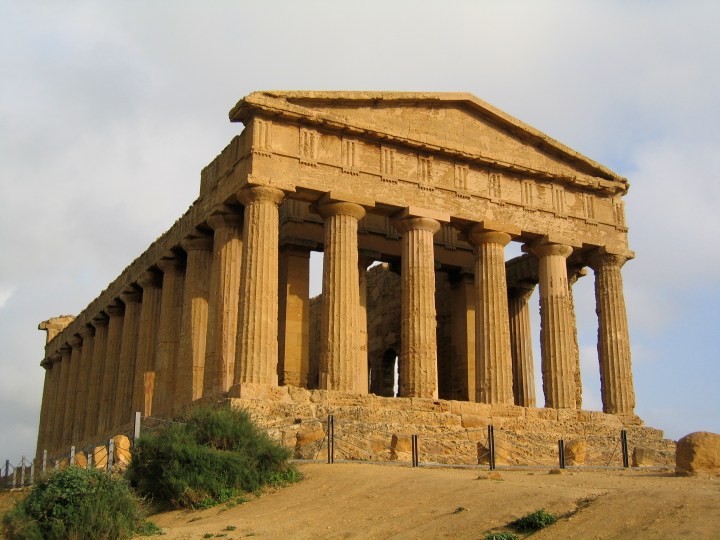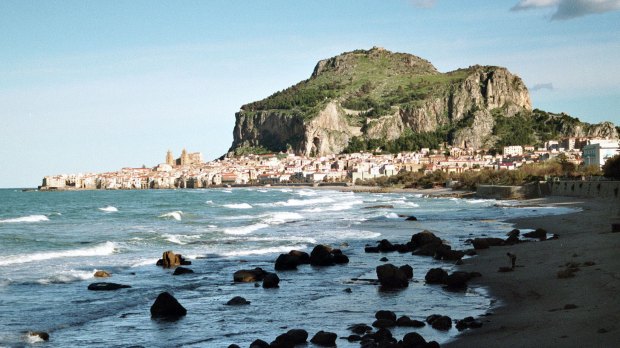The island of Sicily is a unique part of Italy. Its craggy mountains, wild vegetation, and omnipresent sea have fired the imagination of poets, wayfarers, and visitors alike.
Though it is one of 20 Italian regions, its history under the yoke of endless conquerors –especially the Normans – has led to its own distinctive customs, traditions, and even language that make life on the island unique from that on the peninsula.
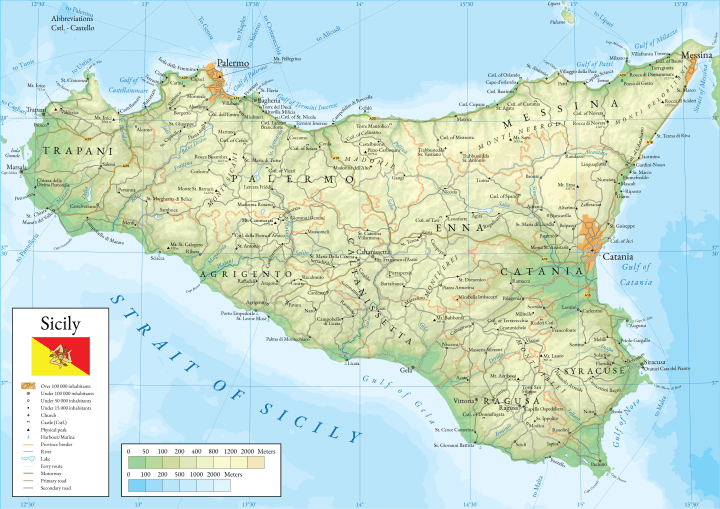
The island has a rich history. Archaeologists have identified evidence of civilization as early as 12,000 B.C. By the fifth century B.C., Sicily was a thriving part of Magna Graecia (Greater Greece), attested to by numerous well-preserved Greek temples and theaters.
Under Norman rule in the latter half of the 11th century, a Golden Age ensued in which diverse cultures including Muslims, Jews, Western and Eastern Christians lived together in harmony. Under the leadership of King Roger I, there was a fusion of Arabian and Byzantine features in architecture and art in what is known as the Sicilian Romanesque.
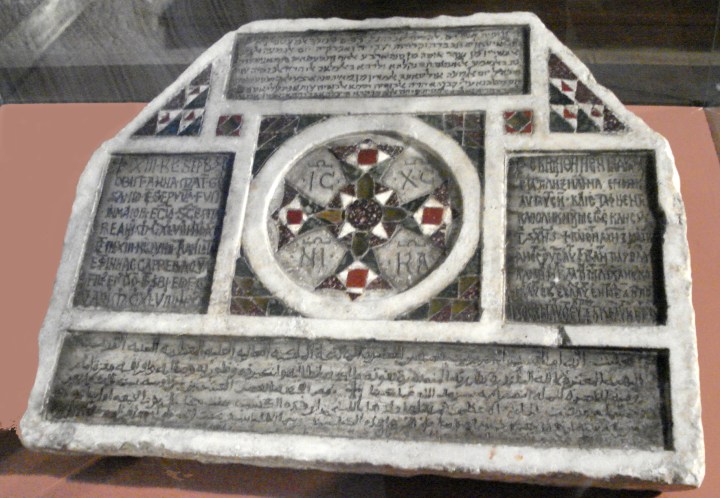
Christianity arrived in the island early. By the time St. Paul’s arrival in Malta, Sicily, and Italy was documented in the Book of Acts, there was already a community of fervent believers: “Three months later we set sail on a ship that had wintered at the island. It was an Alexandrian ship with the Dioscuri as its figurehead. We put in at Syracuse and stayed there three days” (28:11-12).
Today, Sicilians are known for their devout faith. Throughout the island, feast days of local patron saints are observed with rich pageantry and popular traditions.
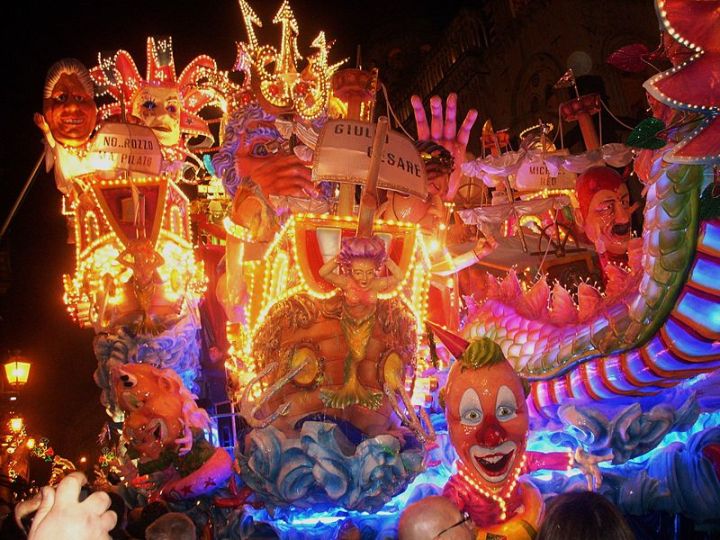
Palermo is the main hub on the western side of the island. Its main religious site is the majestic Cathedral of Santa Maria Assunta. Standing in the cathedral square gazing at its vibrant and striking exterior, one has the impression of being somewhere in southern Spain, North Africa, or the Middle East.
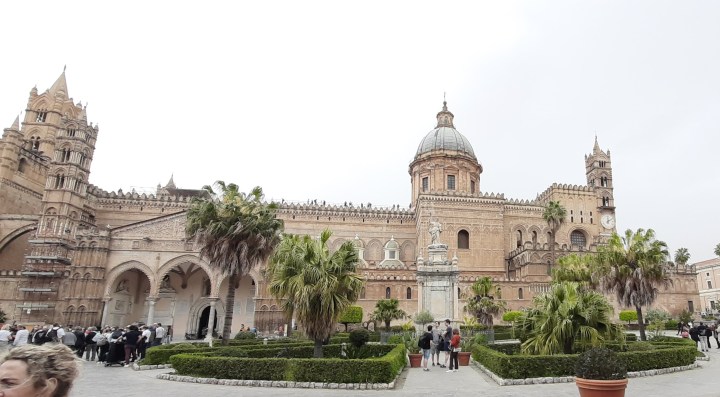
While the interior is considerably simpler than the exterior, it is noted for its imposing naves, tombs of Norman emperors, relics of St. Rosalia, and “treasure of the cathedral.”
Within the city of Palermo are a number of other important churches including St. John of the Hermits (San Giovanni degli Eremiti), a UNESCO World Heritage Site; the Oratory of St. Cita (Oratorio di Santa Cita); the Palatine Chapel (Cappella Palatina); the church of San Cataldo, a UNESCO World Heritage Site; the church of St. Catherine (Santa Caterina); St. Mary of the Admiral (Santa Maria dell’Ammiraglio, also known as the Martorana); and the Capuchin Catacombs (Catacombe dei Cappuccini).
A pilgrimage to Palermo must include a jaunt up to Mt. Pellegrino (Monte Pellegrino), the sanctuary housing Palermo’s patron saint, Santa Rosalia. Though just eight kilometers (five miles) from central Palermo, it feels far removed from the urban crowds. Nestled within a damp grotto, it has a Lourdes-like atmosphere.
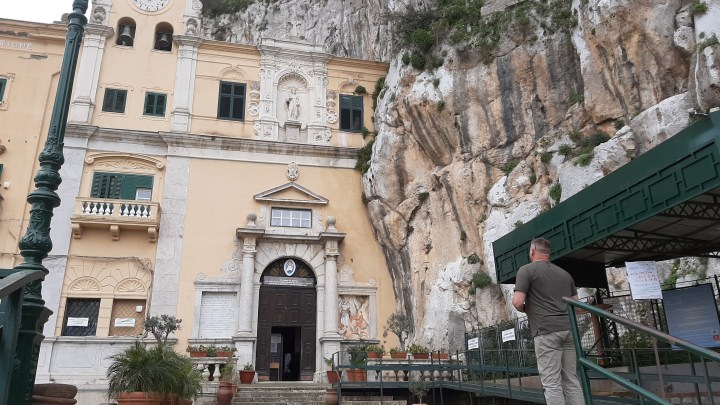
Born in the 12th century to a noble Norman family, Rosalia left everything to live as a hermit in a cave on Mt. Pellegrino. She died there alone in 1166, and her remains are still conserved within the sanctuary.
The people of Palermo celebrate St. Rosalia’s feast day twice a year. On July 14, the city hosts vibrant festivities, including a procession of her relics and a spectacular fireworks display. Later, on September 4, the day she died, the faithful embark on a grueling pilgrimage up to her sanctuary. At 606 meters (1990 feet), reaching the chapel is arduous indeed.
Sicily’s cathedrals
Throughout Sicily are numerous important cathedrals. Not far from Palermo is the municipality of Monreale and its extraordinary Cathedral of Santa Maria Nuova. Located on the slope of Monte Caputo, it affords an extraordinary view of the city of Palermo. Hemmed in by the mountains to the south and the Mediterranean Sea to the north, visitors can see why the city is known as the Golden Basin (Ita: conca d’oro).
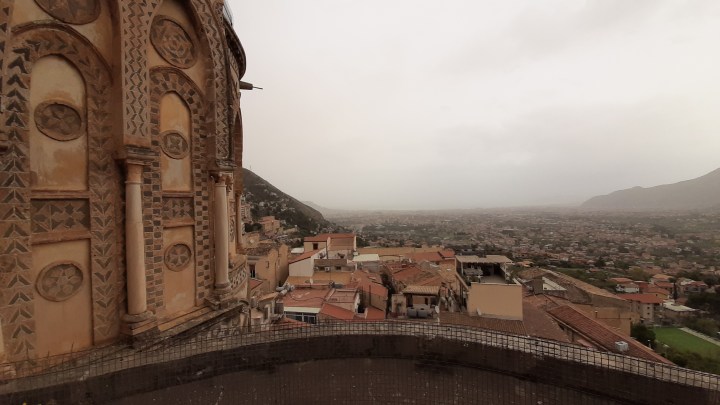
The Cathedral of Monreale is one of the greatest examples of Norman architecture in all of Sicily. Begun in 1174 and completed four years later, it is famous for its rich Byzantine mosaics that adorn the interior and especially the apse.
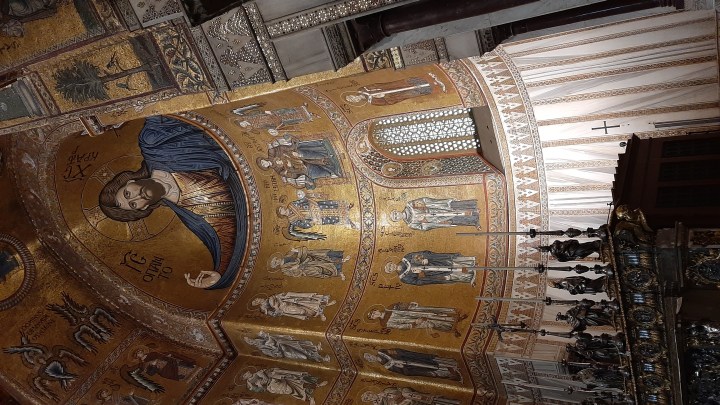
In 2015, the Cathedral of Monreale was named a World Heritage Site by UNESCO as part of the Arab-Norman Palermo and the Cathedral Churches of Cefalù and Monreale. The church is a national monument of Italy and one of the most important attractions in all of Sicily.
Located some 70 kilometers (43 miles) to the east of Palermo on the northern side of the island is Cefalù. Its cathedral is another structure included in the UNESCO World Heritage list.
Erected between 1131 and 1240 in the Norman architectural stye, it is believed the church was the result of a vow made to the Holy Savior by King Roger II, who survived a storm and arrived safely on the beach nearby.
The building has a fortress-like character, and seen from a distance it dominates the skyline of the surrounding medieval town.
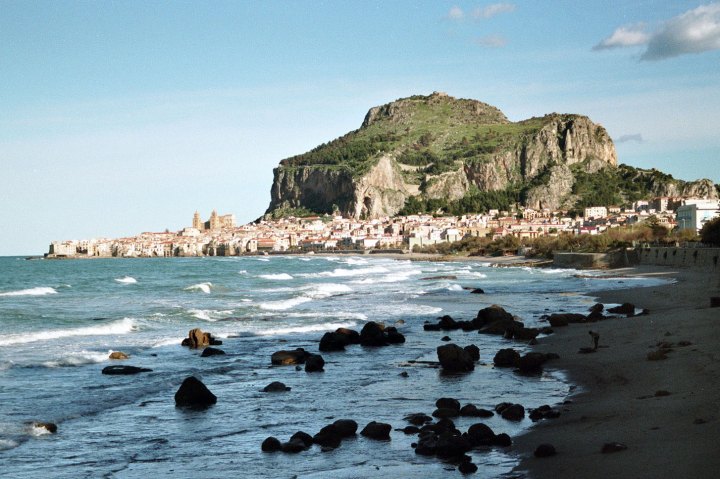
On the eastern side of Sicily is the city of Catania. Under the shadow of the active volcano of Mt. Etna, pilgrims will want to pay homage to St. Agatha (Sant’Agata). An early Roman virgin and martyr patron saint of the city, she is one of seven female saints commemorated by name in the Canon of the Mass.
St. Agatha was from a noble family and made a vow of virginity. After she refused the advances of the Roman prefect, Quintianus, he had her arrested during the persecutions of Decius. She was tortured cruelly (her breasts were cut off, among other things) until she died in the year 251.
St. Agatha’s remains are conserved within the Chapel of Sant’Agata in the city’s cathedral in the historic center. Construction began in the early 11th century on orders of King Roger I in the early years of the Norman domination of the island. (The cathedral also houses the tomb of Catania’s famous opera composer, Bellini.)
During the early part of February, over one million faithful come to Catania for the Feast of Sant’Agata (February 5). Festivities include the traditional parade of the candelore, huge candles covered with handcrafted decorations, cherubs in gilded wood, flowers and flags, and scenes of St. Agatha’s martyrdom.
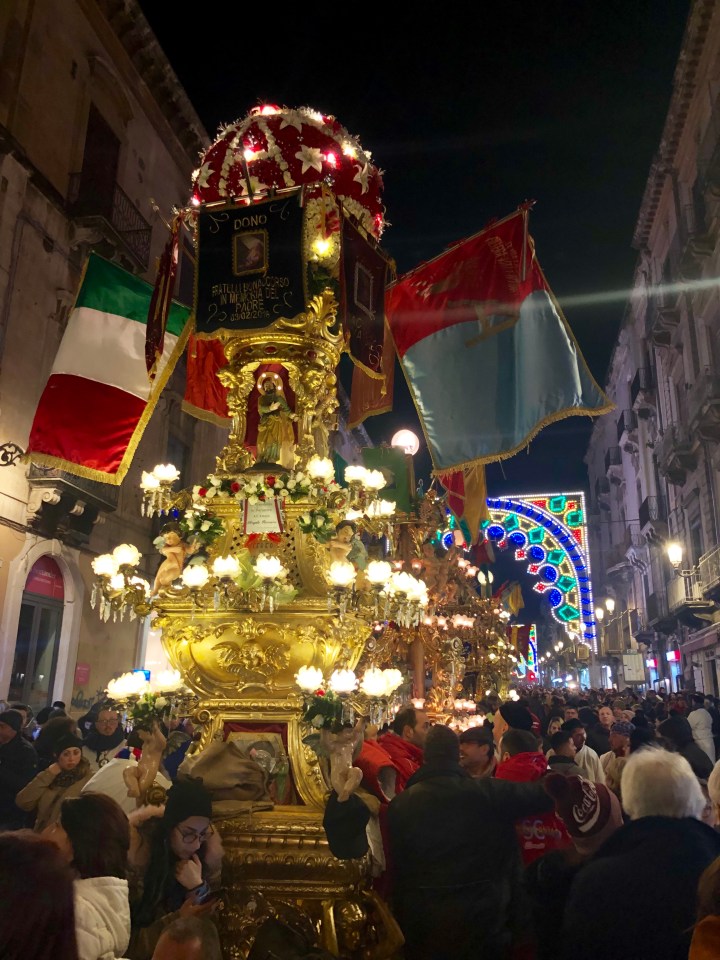
Other religious sites in Catania include the Basilica of San Nicola, located in Piazza Dante; the Benedictine Monastery, one of the largest monastic complexes in Europe; the Via dei Crociferi, whose name derives from the presence of four churches in close proximity of one another — the Church of San Benedetto with its marble staircase of the Angel and connecting convent of the same name, the Church of San Francesco Borgia, the Jesuit College and its enchanting internal cloister, and the Church of San Giuliano.
Near to Catania is the ancient city of Syracuse (Siracusa). With its 2,800 years of history, it is the only city in the world to boast an ancient Greek theater and Roman amphitheater just a few hundred meters apart.
On the island jutting out into the Mediterranean is the Cathedral of the Nativity of Maria Santissima. Once a Greek temple dedicated to Minerva, today the building boasts one of the most beautiful facades in all of Sicily in Baroque and Rococo style. The interior houses statues, artwork, and relics of Syracusan saints, martyrs, and nobles.
Not far away is the Basilica of Santa Lucia al Sepolcro, dedicated to the virgin and martyr and patron saint of the city who was born here at the end of the 3rd century. The Baroque church features a painted ceramic floor and a famous painting by Caravaggio, titled “Burial of Saint Lucy.”
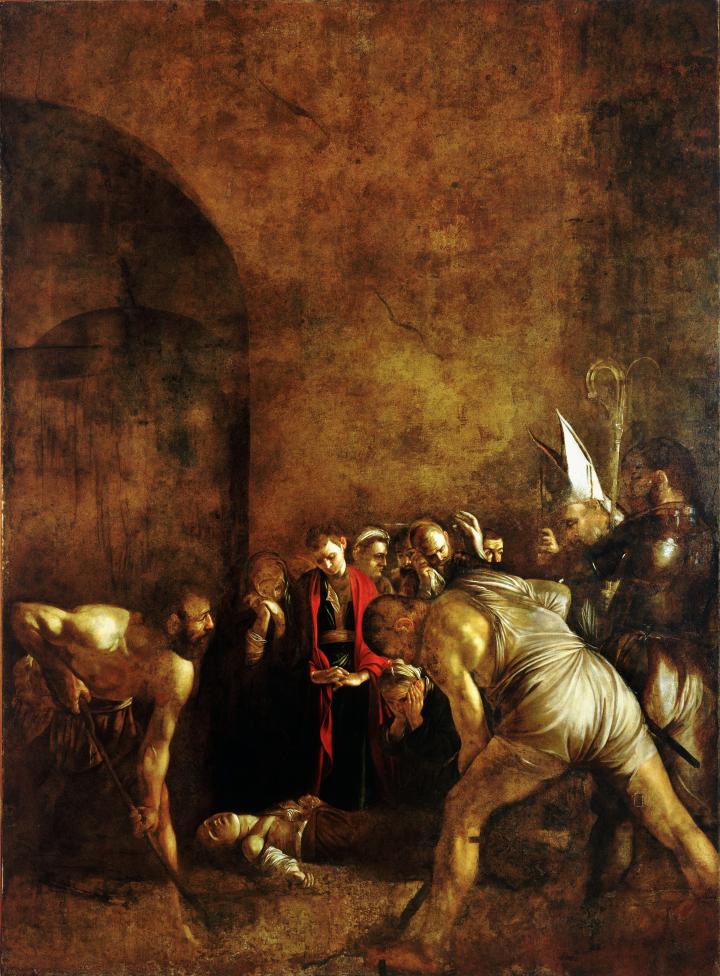
As in other cities, St. Lucy’s feast in Syracuse is a huge event. For the week between December 13 – 20, a statue of St. Lucy is carried solemnly from the cathedral to the church of Santa Lucia al Sepolcro. The procession is followed by an 18th-century carriage with costumed characters. After the religious rites, a carnival-like atmosphere overtakes the city, replete with stalls and vendors, festivities, local foods and treats, and games.
Also in Syracuse is the church of St. John of the Catacombs (San Giovanni alle Catacombe), in the Gothic-Norman style. The catacombs are part of the ancient underground Christian cemetery.
In Messina, located in the northernmost part of Sicily across the eponymous strait from Italy, is the Cathedral of St. Mary of the Assumption, yet another well-preserved example of Norman architecture. Begun in 1120 by orders of King Roger II, it took 77 years before it was eventually consecrated.
Despite damage over the centuries by fire and earthquake, Messina’s cathedral has somehow managed to retain its ancient Norman architectural structure. The adjacent bell tower boasts an astronomical clock, the largest such clock in the world.
Close to Messina is the extraordinary Sanctuary of Tindari overlooking the sea. Inside there is a precious statue of a Black Madonna, sculpted in cedar wood during the Byzantine era.
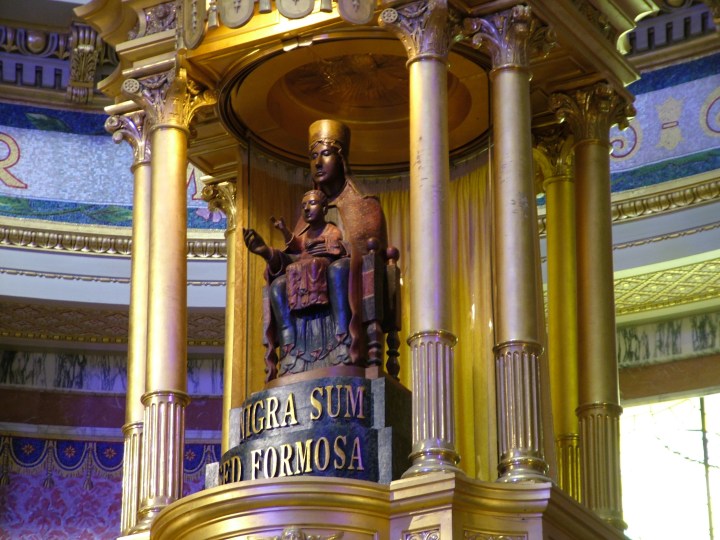
Finally, there is Agrigento, a hilltop city on Sicily’s southwest shore. The city’s cathedral, dedicated to the patron saint of the city, St. Gerland (San Gerlando), is worth a visit. Of note are its bell tower with Gothic and Catalan motifs and an Arab-Norman style balcony.
Of course a visit to Agrigento must include a jaunt to the Valley of the Temples. Agrigento is famed for the ruins of the ancient city of Akragas, now a vast archaeological site with well-preserved Greek temples.
